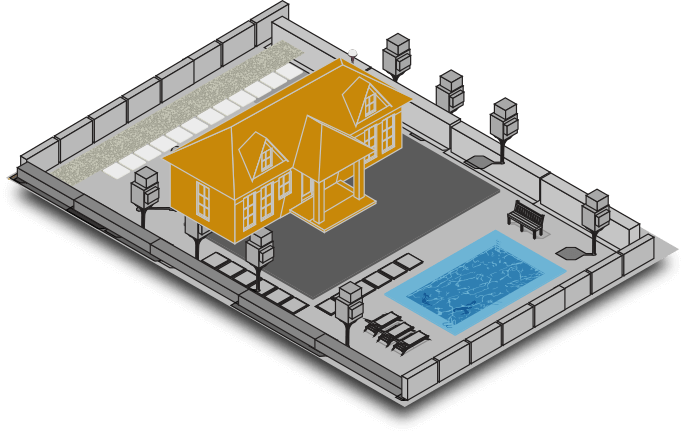
Tarzana Landscape Architect Designs
More About This Project

Pool Design:
The process of building an inground pool can be divided into several phases. The first phase is the design phase, during which the client works with a pool designer to create a custom pool that meets their specific needs and preferences. This phase involves selecting the pool’s shape, size, depth, and features, such as lighting, waterfalls, and spas. The designer will also consider factors such as the site’s topography, soil type, and drainage to ensure the pool is structurally sound.
Once the design is finalized, the construction phase begins. This phase in volves excavation of the site, which can be a significant undertaking depending on the size and complexity of the pool. The pool’s shell is then constructed using steel reinforcing bars and concrete. The plumbing, electrical, and filtration systems are installed, and the pool’s interior finish is applied. Finally, decking, landscaping, and any additional features such as a pool house or outdoor kitchen are added.

Retaining Wall:
Retaining walls are structures built to hold back soil, rock, or other materials, preventing erosion and landslides. In areas like ours, many homes are located on hillsides, and retaining walls are essential to maintaining the stability of the land. They also provide an attractive backdrop for garden beds and can be used to create terraced landscapes.
Retaining walls can be made from a variety of materials, including stone, brick, concrete, or wood. The material you choose will depend on the style of your home and the look you are trying to achieve. For example, stone retaining walls provide a natural and rustic look, while concrete retaining walls are modern and sleek. Wooden retaining walls are a great option for those looking for a warm, inviting look.

Hardscaping
Hardscaping services, like the Patio Installation we performed for this client, involve a meticulous process to create durable and visually appealing outdoor surfaces. The initial phase is the planning stage, where you collaborate with a hardscaping expert to design a customized layout that suits your specific needs and enhances the overall aesthetic of your property. This includes selecting the type, shape, and size of the pavers, as well as considering any desired patterns or borders.
Once the design is finalized, the installation phase begins. This typically starts with site preparation, which may involve excavating the area to create a stable foundation. The appropriate base materials, such as crushed stone or sand, are then meticulously applied and compacted to ensure a solid surface. The pavers are carefully installed, taking into account proper alignment, spacing, and any desired decorative elements. Edging is added to secure the pavers and create clean lines and transitions.
After the pavers are in place, any necessary adjustments are made to ensure a level surface. Joint sand is then applied and swept into the gaps between the pavers to stabilize them and prevent shifting. This helps create a cohesive and polished look. Finally, the area is thoroughly cleaned, and any additional features such as lighting or landscaping are incorporated to enhance the overall appeal of the hardscape.
Additional Project Photos
- Landscaping
- Tree Planting
- Pool Installation



Get In Touch
If you have questions or would like a free consultation on your upcoming construction project please call us at 866-341-8130, email Info@vitolilandscapedesign.com, or send us a message using the form below.


























